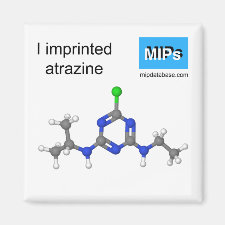
Authors: Schneider F, Piletsky S, Piletska E, Guerreiro A, Ulbricht M
Article Title: Comparison of thin-layer and bulk MlPs synthesized by photoinitiated in situ crosslinking polymerization from the same reaction mixtures.
Publication date: 2005
Journal: Journal of Applied Polymer Science
Volume: 98
Issue: (1)
Page numbers: 362-372.
DOI: 10.1002/app.22112
Abstract: The synthesis and comparative characterization of molecularly imprinted polymers (MIPs) in two different formats, as thin layers grafted to the entire surface of polypropylene microfiltration membranes and as conventional particles, are described. Imprinting with atrazine was performed by using itaconic acid and N,N'-methylene-bisacrylamide as functional and crosslinker monomers in methanol as the solvent. Polymerization had been initiated by UV irradiation of benzoin ethyl ether and driven to low monomer conversion for the thin-layer polymers and to high monomer conversion for the bulk materials. The binding performance of MIP composite membranes and of MIP particles packed into cartridges was evaluated in solid-phase extraction (SPE) experiments of atrazin and simazin from aqueous solutions. The SPE performance depended strongly on pH and buffer concentration. Although an imprinting effect was observed for both formats, the specificity (MIP versus Blank) and the selectivity (atrazin versus simazin) were much higher for the thin-layer composite membranes than for the bulk polymer particles. In particular, the atrazin/simazin selectivity increased from 32% for the Blank to 78% for the MIP composite membranes. A major reason is the hindered accessibility of the internal pore structure of the particles, whereas the porous filtration membranes are much more compatible with the fast SPE protocol. Furthermore, based on pK, of the functional carboxylic acid groups-from potentiometric fitration and polarity of the binding environment-from fluorescent probe analysis, different properties of the imprinted binding sites can be postulated for the two MIP formats. However, the differences between MIP and Blank were much more pronounced for the thin-layer composite membranes. The hydrophobic surface of the polypropylene membrane appeared to be a major factor affecting the binding performance of thin-layer MIPs. The new porous composite membranes could be particularly useful as selective SPE materials in environmental, pharmaceutical, and analytical applications. (c) 2005 Wiley Periodicals, Inc
Template and target information: atrazine
Author keywords: crosslinking, molecular imprinting, nanotechnology, photopolymerization, surfaces



Join the Society for Molecular Imprinting

New items RSS feed
Sign-up for e-mail updates:
Choose between receiving an occasional newsletter or more frequent e-mail alerts.
Click here to go to the sign-up page.
Is your name elemental or peptidic? Enter your name and find out by clicking either of the buttons below!
Other products you may like:
 MIPdatabase
MIPdatabase









